Recombinant Human ARRb2 protein(Asp262~Cys430), His-GST-tagged
| Cat.No. : | ARRb2-3639H |
| Product Overview : | Recombinant Human ARRb2 protein(Asp262~Cys430), fused with N-terminal His tag and GST tag, was expressed in E.coli. |
- Specification
- Gene Information
- Related Products
- Case Study
- Application
- Download
| Species : | Human |
| Source : | E.coli |
| Tag : | GST&His |
| Protein Length : | Asp262~Cys430 |
| Form : | 20mM Tris, 150mM NaCl, pH8.0, containing 1mM EDTA, 1mM DTT, 0.01% SKL, 5% Trehalose and Proclin300. |
| Molecular Mass : | 45.9kDa |
| Endotoxin : | <1.0EU per 1μg (determined by the LAL method). |
| Purity : | > 90% |
| Storage : | Avoid repeated freeze/thaw cycles. Store at 2-8°C for one month. Aliquot and store at -80°C for 12 months. |
| Reconstitution : | Reconstitute in 20mM Tris, 150mM NaCl (pH8.0) to a concentration of 0.1-1.0 mg/mL. Do not vortex. |
| Gene Name | ARRB2 arrestin, beta 2 [ Homo sapiens ] |
| Official Symbol | ARRb2 |
| Synonyms | ARRB2; arrestin, beta 2; ARR2; beta-arrestin-2; arrestin 3; BARR2; DKFZp686L0365; arrestin beta-2; ARB2; |
| Gene ID | 409 |
| mRNA Refseq | NM_001257328 |
| Protein Refseq | NP_001244257 |
| MIM | 107941 |
| UniProt ID | P32121 |
| ◆ Recombinant Proteins | ||
| ARRB2-459R | Recombinant Rat ARRB2 Protein, His (Fc)-Avi-tagged | +Inquiry |
| ARRB2-0341H | Recombinant Human ARRB2 Protein, Tag Free | +Inquiry |
| ARRB2-803R | Recombinant Rat ARRB2 Protein | +Inquiry |
| ARRB2-855H | Recombinant Human ARRB2 protein, GST-tagged | +Inquiry |
| ARRB2-1247HF | Recombinant Full Length Human ARRB2 Protein, GST-tagged | +Inquiry |
| ◆ Cell & Tissue Lysates | ||
| ARRB2-130HCL | Recombinant Human ARRB2 cell lysate | +Inquiry |
Case 1: Bae WY, et al. Cell Death Differ. 2021
Arrb2 primarily reduces the signals from G-protein-coupled receptors by aiding in receptor desensitization and internalization. It's associated with cancer too, influencing tumor growth, spread, and cell death, though the details were previously unclear. We've found that Arrb2 aids in breaking down HIF-1α, a key player in managing oxygen levels in cells. Arrb2 teams up with HIF-1α, bringing in PHD2 and pVHL to push HIF-1α towards degradation via the 26S proteasome. When Arrb2 is overexpressed in glioblastoma cells, it dampens HIF-1α signals, hindering tumor size and blood vessel formation. Notably, lower levels of Arrb2 align with higher HIF-1α levels and worse survival rates in glioblastoma patients.
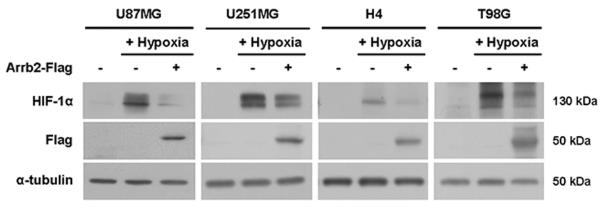
Fig1. GBM cell lines were transfected with pCMV-Flag-Arrb2 and exposed to hypoxia for 8 h.
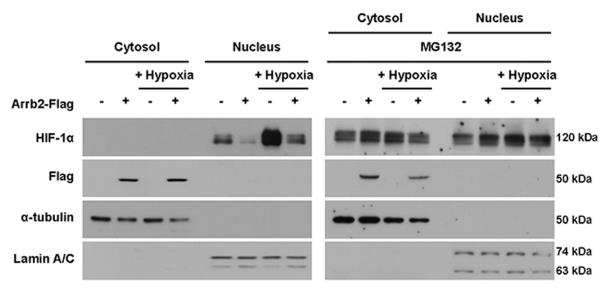
Fig2. Nuclear and cytosolic lysates were prepared from Flag-Arrb2-transfected U87MG cells under normoxic or hypoxic conditions.
Case 2: Wu Y, et al. Cell Physiol Biochem. 2018
Researchers have been checking out the impact of cigarette smoke on lung cells, zooming in on a protein named beta-arrestin2. They used BEAS-2B lung cells and soaked them in a mix made from cigarette smoke residue, called cigarette smoke condensate (CSC). When the cells were in this soup, the beta-arrestin2 levels dropped, and a pathway called AMPK/mTOR got activated. This led to more cells eating themselves, a process called autophagy, and more inflammation markers like IL-6, IL-8, and MCP-1 showing up. But, when they gave the cells a heads-up with drugs like propranolol and ICI118551 before the CSC exposure, it helped to ease these effects. Plus, when they stopped the cells from eating themselves after the CSC exposure, it cut down on the production of inflammation-causing molecules.
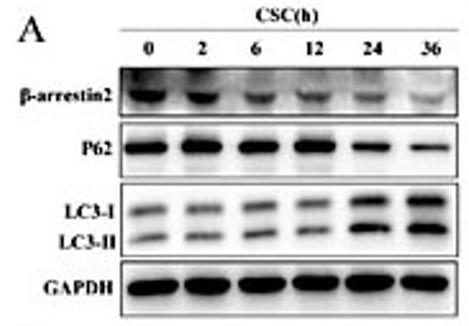
Fig1. Western blot analysis shows changes in the expression of β-arrestin2 and the autophagy-associated proteins.
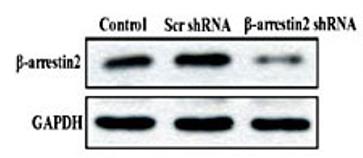
Fig2. Western blot analysis shows changes of β-arrestin2 in Beas-2B cells.
Recombinant Human ARRb2 (rhARRb2) is a key player in both research and industrial production, particularly shining in cell signaling and cancer studies.
In the research world, rhARRb2 is vital for digging into the complex details of G-protein coupled receptor (GPCR) signaling. It's crucial for understanding receptor behavior, like how they reset or deactivate in response to different triggers. This helps us grasp how cells react to their environment. ARRb2 also plays a part in receptor internalization, which is essential for keeping cell signaling pathways in check. Notably, it's been linked to breaking down HIF-1α, a pivotal regulator of oxygen balance, pointing to its potential as a target in glioblastoma treatment, a serious brain cancer.
In the industrial sector, rhARRb2 is used in drug development aimed at GPCRs, a major group of drug targets. Its role in altering GPCR signaling makes it indispensable when designing and testing new medications. Moreover, knowing how ARRb2 functions in cancer can help create targeted therapies. Such treatments might leverage ARRb2's actions, offering fresh options for tackling glioblastoma and other disorders tied to problematic GPCR signaling.
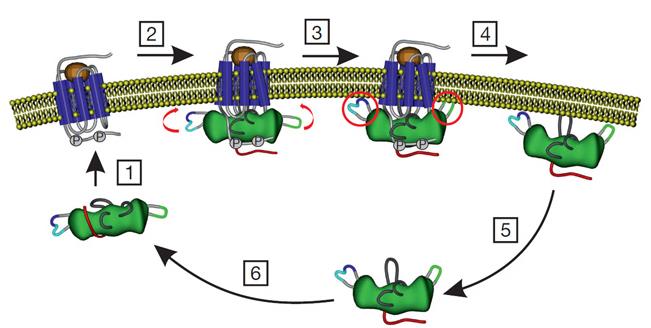
Fig1. Model of an activation/deactivation and translocation cycle of β-arrestin2. (Susanne Nuber, 2016)
Not For Human Consumption!
Inquiry
- Reviews
- Q&As
Ask a Question for All ARRb2 Products
Required fields are marked with *
My Review for All ARRb2 Products
Required fields are marked with *
Inquiry Basket


